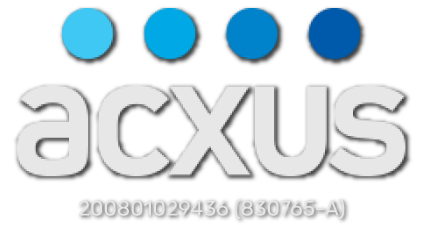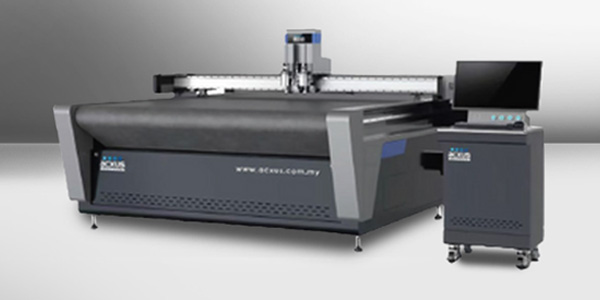Whether you run a signage shop, a print‑on‑demand studio, or you’re just stepping into large‑format production, this guide explains cutting plotters in clear, practical terms. You’ll learn what they do, how they differ from vinyl cutters, what they can cut, typical prices in Malaysia, how to find a local supplier, and how to choose the right model for your jobs.
Explore machines and specs here: https://acxus.com.my/product-category/large-format-cutting-machine/
What Is a Cutting Plotter (and Why You Might Need One)
A cutting plotter (sometimes called a cutter plotter or just “cutter”) follows vector paths to cut shapes, text, and logos from sheet or roll media. Instead of printing ink, it uses a blade (or specialized tools) to score, kiss‑cut, or full‑cut material. If you produce stickers, decals, packaging mockups, POP displays, or garment graphics, a cutting plotter can automate the most time‑consuming part—clean, repeatable cuts.
Typical workflows you can run:
- Stickers & decals: Print → register marks → contour cut → weed → apply/laminate.
- Heat transfer apparel: Design → mirror → cut HTV → weed → heat press.
- Packaging prototypes: Cut/slice/crease carton board and corrugated for dielines.
- Signage: Cut self‑adhesive vinyl for window, wall, and vehicle graphics.
Cutting Plotter vs. Vinyl Cutter: What’s the Difference?
The terms overlap, but thinking in use cases helps:
- Vinyl cutter (roll type): Optimized for thin, flexible rolls—self‑adhesive vinyl, sticker media, heat transfer vinyl. Ideal for decals and apparel. Fast, accurate, affordable.
- Cutting plotter (broad term): Can refer to both roll machines and flatbed systems. Flatbed cutters handle rigid or semi‑rigid sheets (carton, foam board, PVC board, etc.), support multiple tools (knife, creaser), and are better for packaging, displays, and thick substrates.
If your work is mostly vinyl decals and HTV, a roll cutter is perfect. If you need to cut thicker boards or run packaging prototypes, consider a flatbed.
How to Choose the Right Cutter (User Checklist)
1) Media & thickness
List what you actually cut weekly (vinyl, HTV, laminated prints, carton, corrugated, foam board). Match this to the machine’s max cutting force + supported tools.
2) Width & bed size
Choose a roll width (e.g., 24″, 48″) or a flatbed size that matches your most common jobs. Oversizing increases cost and footprint.
3) Registration & accuracy
If you print‑then‑cut, look for camera/mark detection and reliable contour cutting.
4) Throughput & speed
Servo motors, higher cut speeds, and smarter toolpaths reduce turnaround times.
5) Software & drivers
Ensure plug‑ins or drivers work with your OS and design apps (Illustrator/CorelDRAW) and that they’re easy for your team to use.
6) Support & consumables
Check availability of blades, cutting mats, creasing tools, and local service. Downtime costs more than parts.
7) Budget, ROI, and space
Factor in machine price, accessories, service, and floor space. Estimate monthly jobs to see payback time.
Drivers & Software: What They Do (and Why They Matter)
A “cutting plotter driver” or control software translates your vector paths into machine moves (blade up/down, speed, force). Good software saves time and waste by optimizing toolpaths, recognizing registration marks, and storing presets for your media.
What to look for:
- Stable Windows/macOS support and updated drivers.
- Plug‑ins for Illustrator/CorelDRAW or an intuitive standalone app.
- Contour‑cut workflows with auto mark detection.
- Media libraries and force/speed presets you can tweak and save.
- Clear job logs so you can track repeats and troubleshoot quickly.
Finding a Local Supplier (So “Near Me” Actually Helps You)
If you’re in the Klang Valley or wider Malaysia, buying locally gives you faster delivery, onsite setup, training, and warranty support. ACXUS serves customers across Kuala Lumpur, Petaling Jaya, and Selangor from our Semenyih HQ.
Why visit a showroom:
- See real cuts on your media.
- Compare roll vs. flatbed machines side‑by‑side.
- Get force/speed settings that match your jobs.
- Discuss maintenance and consumable costs up front.
HS Code Basics for Malaysia (Import & Customs)
HS (Harmonized System) Codes classify products for customs and duties. The correct code can vary based on machine type (roll vs. flatbed), functionality, and accessories.
Commonly referenced codes for cutting machines (for guidance only):
- 8471.60.25 – Often used for plotter‑type units under data‑processing categories.
- 8441.90.00 – Machinery for making up paper/paperboard; sometimes used for cutters.
- 8441.10.90 – Cutting machines of various types (non‑domestic), depending on configuration.
Because classification depends on exact specs, confirm with Malaysian customs or a licensed forwarder before you import. Correct HS coding prevents delays, fines, or unexpected duties.
Price Guide (Malaysia)
Actual pricing depends on size, motors, tools, software, and brand support, but these ballparks help planning:
- Roll vinyl cutters (entry to pro): ~RM2,000 to RM10,000+
- Flatbed cutters (production‑grade): typically five‑figure RM depending on bed size, tool heads, and cameras
Remember to budget for blades, mats, creasing wheels, cutting underlays, and training/setup. If you run print‑then‑cut, factor in a laminator and registration/camera options for higher accuracy.
Cutting Plotters for Vinyl (Stickers, Wraps, and HTV)
If your workload centers on decals, labels, and apparel, a roll‑to‑roll cutter is your most efficient choice.
Best practices for clean vinyl cuts:
- Start with manufacturer presets for your vinyl type, then fine‑tune blade force to avoid cutting the liner.
- Use fresh blades for small text and detailed graphics; dull tips lift corners and cause weeding headaches.
- Calibrate offset and overcut for tight corners and small fonts.
- Let laminated prints rest before cutting to minimize shrink or edge lift.
FAQs (Straight Answers)
What does a cutting plotter do?
It follows your vector paths to cut designs out of media—vinyl, paper, carton, and more. Think of it as automated, ultra‑precise “scissors” guided by your artwork.
What’s the difference between a vinyl cutter and a plotter?
“Vinyl cutter” usually means a roll‑fed cutter built for thin, flexible films (self‑adhesive vinyl, HTV). “Plotter” is broader and includes flatbeds that can also score/crease and cut thicker boards.
What materials can a cutter plotter cut?
Depends on the model and tools, but commonly: self‑adhesive vinyl, HTV, sticker media, paper/cardstock, thin PET/PP, stencil films, magnetic sheets, reflective films. Flatbeds add carton, corrugated board, foam board, PVC board, and some composite sheets.
Can a plotter cut cardboard?
Yes—flatbed cutters are built for it and can also crease for packaging dielines. Roll vinyl cutters may only handle kiss cuts or very thin card; they’re not meant for thick corrugated.
Why Buy from ACXUS (What You Get as a User)
- Right‑fit recommendations: We match machine, tools, and software to your media and jobs.
- Local demos & training: Test on your materials and leave with working presets.
- After‑sales support: Blades, mats, spare parts, and responsive service when you need it.
- Scaling advice: From first cutter to multi‑device workflows, we help plan throughput and ROI.
Quick Summary
- Pick roll machines for vinyl/stickers/HTV; pick flatbeds for boards and packaging.
- Check media, width, accuracy, software, support, and total cost (machine + consumables + training).
- Use local suppliers for faster setup and reliable service.
- Verify HS codes before importing.
- Ask for a live demo on your actual media to confirm cut quality and settings.
When you’re ready, we’ll help you test, spec, and configure the right cutter for your work.
📞Contact us now or WhatsApp us for a quick recommendation.

